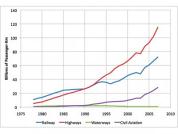IIn 2010, China’s investments into railway construction showed a growth rate of above 100%. The demand for railway transport equipment such as locomotive, freight wagon, passenger coach, etc. brought by China’s railway construction will bring along the rapid development of railway transport equipment industry. | 
|
China’s traditional passenger coach, freight wagon and otherwise experienced a steady growth in 2009. Under the backdrop of electrification of Chinese railways and the increasing construction of high-speed railway & urban rail transit, products like AC transmission high-power locomotive, electric locomotive, electric multiple units (EMU), urban rail & subway vehicle have been the highlights of market growth in this industry. Taking China South Locomotive & Rolling Stock Corporation Limited (CSR) as an example, in 2009, the market growth rate of its locomotive, EMU, urban rail & subway turned out to be 73.06%, 39.95%, and 70.55%, respectively. From the perspective of market competition structure, CNR (China CNR Corporation Limited) and CSR currently dominate railway transport market in China. As the key subordinate enterprise of CNR, CNR Changchun currently accounts for 50% share of the total quantity of passenger trains in China and 40% of the in-service quantity of urban rail & subway vehicles. In 2009, the business revenue of CNR Changchun was RMB5.77 billion, and its new orders originated primarily from such business as subway vehicles, EMU and so forth. |